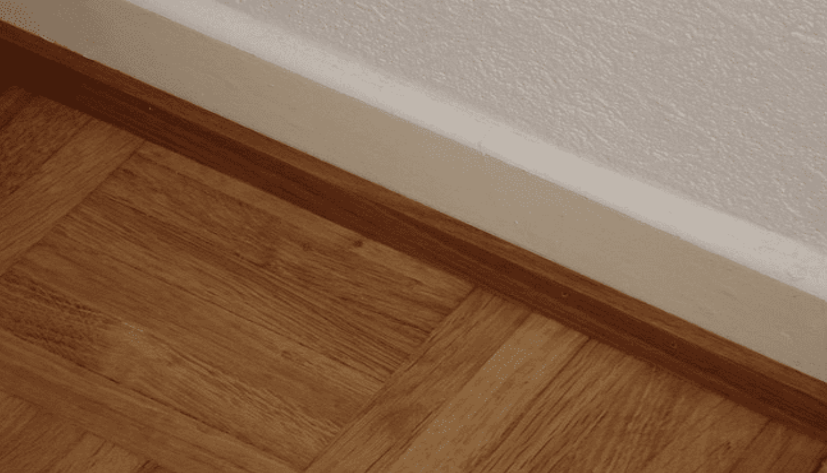“Fußbodenleiste (Skirting Board)”, by Porsche 997 Carrera, licensed under Creative Commons ShareAlike 3.0 Unported (CC BY-SA 3.0)
Purpose Of Skirting
Skirting baseboards are typically vinyl or wooden strips covering the bases of interior walls. Performing the role of transition, skirting bridges hollow spaces between wall bases and floor edges. Its history dates back to the Victorian period when large-sized baseboards were popular to complement high ceilings and essential to close up floor perimeters against the walls. The historical features remained influential in modern interiors. Having an integral role in interior design, here are three key reasons why skirting is important for vinyl flooring.
Bridge Connecting Junctions
If there are visible gaps between wall bases and vinyl floor edges, they could be due to floating or glueless installation. Some level of space is necessary to accommodate the expansion and contraction of vinyl planks or tiles as the climate changes. The general rule of thumb is a one-quarter-inch gap between floorings and walls. Exposed spaces are vulnerable to dust trapping and moisture seeping in. Apart from gaps, there may be protruding electrical wirings, which pose a hazard. Forming as bridging junctions between adjoining wall bases and floor edges, skirting baseboards are effective in concealing exposed gaps and fittings. Hence, they act as safety barriers to prevent hazards while leaving enough room for expansion and contraction. Of course, if gaps or protrusions are too large, reworking or reinstalling affected flooring planks and walls may be necessary. Make sure to clarify with your contractor and seek industrial advice.
Protects Floors and Walls
Skirting baseboards protect wall bases from wear and tear from moving in or rearranging furniture. Furniture shifting is necessary when they are out of place or when cleaning the underneath trapped dust However, have you ever encountered markings on walls imprinted from moving bulky sofas and tables with protruding or irregular-shaped fittings? Chances are there is no skirting, or the baseboards are unsuitable. The projected baseboards facilitate a long-term protection barrier to shield floor edges and wall bases from grazing by furniture shifting. Besides a protection barrier, the baseboards create a space between furniture and wall surfaces to prevent grazing against each other. In addition, constant contact with a wet mop would eventually cause unsightly patches on the walls. During mopping floors, skirting baseboards stop the mop from touching wall surfaces. In November 2015, Singapore’s HDB introduced Unplasticised Polyvinyl Chloride (UPVC) skirting to complement its flats’ vinyl flooring systems. UPVC skirting offers a consistent tone and seamless protection without installation joints.
Stylish and Streamlined Transition
Skirting provides an ideal solution for a stylish and streamlined transition between flooring edges and wall bases. Skirting baseboards help to align interior spaces and make a positive visual impact that defines your unique styles. The baseboards highlight accents to blank walls and add discernible dimensions at the bases, which raise the wall and floor profiles. The continued design offers a continuation of interior elements, which is most suitable to install along the stairs that flush against the walls. Double-layer design utilises dual tones for a harmonised colouring and detailed dimensional effect. For a simple and sleek transition, the pencil style is ideal for integrating the floor surfaces with the walls. For further design inspiration, you can refer to these two guides - “What is Skirting in Construction? Purpose and Types” and “9 Eye-Catching Skirting Designs”.


